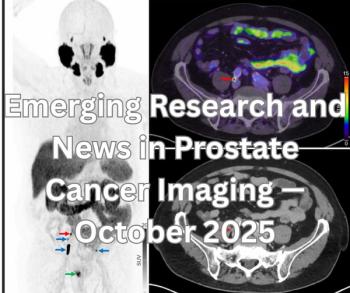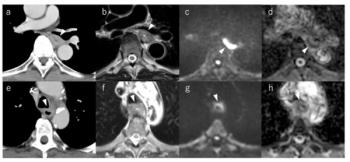
Radiology’s Believe It or Not
Enter Ripley’s Odditorium on the Web, and you are greeted by the man who smokes through his eye, the human plank, Fire Eater, and Rubber Man. These are not the sort of folks most people meet in their daily lives. They establish Ripley’s Believe It Or Not as the world’s authority on unbelievable, odd, weird, and unusual things.
Enter Ripley's Odditorium on the Web, and you are greeted by the man who smokes through his eye, the human plank, Fire Eater, and Rubber Man. These are not the sort of folks most people meet in their daily lives. They establish Ripley's Believe It Or Not as the world's authority on unbelievable, odd, weird, and unusual things.While organized radiology's response to the inclusion of x-rays and gamma rays on the government's list of known or suspected carcinogens may not meet Ripley's criteria, I find it unbelievable in its own right.A day after the list was released, Dr. James P. Borgstede, chair of the American College of Radiology's board of chancellors, told the Associated Press that x-rays and gamma rays do not belong on a list of substances that pose a risk to people in the course of their normal, daily lives because they "are not substances that the general public has access or exposure to."A statement released by the ACR amplified Borgstede's remarks: "The ACR holds that appropriately utilized radiological procedures administered by trained, certified medical physicists and technicians in conjunction with radiologists, radiation oncologists, and nuclear medicine physicians pose no undue health risk to patients. However, the potential for hazard exists when unqualified providers administer radiological procedures. Utilization of medical imaging procedures by unqualified providers may needlessly expose patients to radiation and may expose patients to radiation levels that could be unduly hazardous." [emphasis added]After reading these two contradictory statements, I'm led to wonder, do x-rays and gamma rays present a risk of cancer or not? Is the next step bumper stickers saying "X rays don't cause cancer - nonradiologists do."The RSNA did a better job of getting its ideas across. In a statement released by the society, radiologists at high-profile medical institutions stated that x-ray procedures convey many benefits and that the risk they pose is extremely low. Like its counterpart, however, the RSNA swerved off track, stating that since Wilhelm Roentgen discovered x-rays in 1895, "radiologists and medical physicists have worked closely together to maximize image quality, while reducing (the) dose of diagnostic x-rays to minimize, if not eliminate, the risks associated with medical imaging procedures."To suggest a century-long campaign of caution is a bit over the top. X-ray dose became an issue among European physicians less than a decade ago and gained the attention of the U.S. medical establishment only in the last few years. Later in the release, the RSNA rightly stated that for higher dose exams, such as CT scans or those using contrast materials such as barium, the radiologist may want to consider the patient's history of x-ray exposure. But the organization veered off course again, stating "if a patient has had numerous x-ray exams, keeping an x-ray history record will help a doctor make an informed decision."An informed decision about what? Whether to examine the patient using x-rays? Should the physician make this decision, or should the physician inform the patient of the risks and benefits under his or her specific circumstances and let the patient decide?I can understand why the ACR and RSNA don't like seeing x-rays and gamma rays in the same basket as hepatitis B and C viruses and human papillomaviruses, each of which was added this year to the list of known or suspected carcinogens. But their appearance on this list should not come as a shock.The RSNA acknowledges that the link between radiation and cancer is not new. The National Institute of Environmental Health Sciences, which helps compile the list, concluded that x-rays and gamma radiation have been linked to cancer of the salivary glands, stomach, colon, bladder, ovaries, central nervous system, and skin, a claim that neither the ACR nor RSNA chose to dispute in its statement.Children exposed to high levels of x-rays have a higher risk of leukemia and thyroid cancer, while men and women exposed to chest x-rays at certain times can have high risks of breast and lung cancer, according to the NIEHS. If these assertions are not true, organized radiology should say so. It should not argue to have x-rays and gamma radiation excluded because they are not as easily attainable, particularly since this argument is getting weaker with each passing day.At one time, only women were advised to seek x-ray screening, as mammography was - and remains - the best tool for the early detection of breast cancer. Now, however, men are being asked to decide between virtual colonography and the far less appealing optical means of screening for colon cancer. In the years ahead, men and women alike will be asked to decide whether to be screened with CT for heart disease.Industry executives are looking forward to an age of personalized medicine, when disease is spotted early and tracked over a lifetime with medical imaging equipment. Breast tomosynthesis will map vascular beds, indicating the early growth of cancer. High-tech biomarkers carrying gamma ray-emitting isotopes will scout for tumors. Patients will have to choose whether to be part of this new medical landscape. To make an informed decision, they'll have to recognize the dangers of x-rays and gamma rays, weighing them against the benefits.Organized radiology should promote this kind of decision-making. Doing otherwise impairs the credibility of organized radiology, raising questions about its priorities and those of the physicians it represents and prompting suspicions about what radiology is trying to hide.
Would you like to comment on this topic?
Post a comment at our
bulletin board.
Or reply to our Hot Button question: X-rays as carcinogens
The U.S. National Toxicology Program has added ionizing radiation to its list of known carcinogens. Do you believe this step will deter patients from getting needed x-ray and CT exams, or that it is a legitimate warning against overuse of radiological procedures?
Newsletter
Stay at the forefront of radiology with the Diagnostic Imaging newsletter, delivering the latest news, clinical insights, and imaging advancements for today’s radiologists.





























